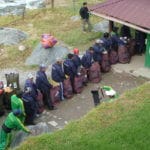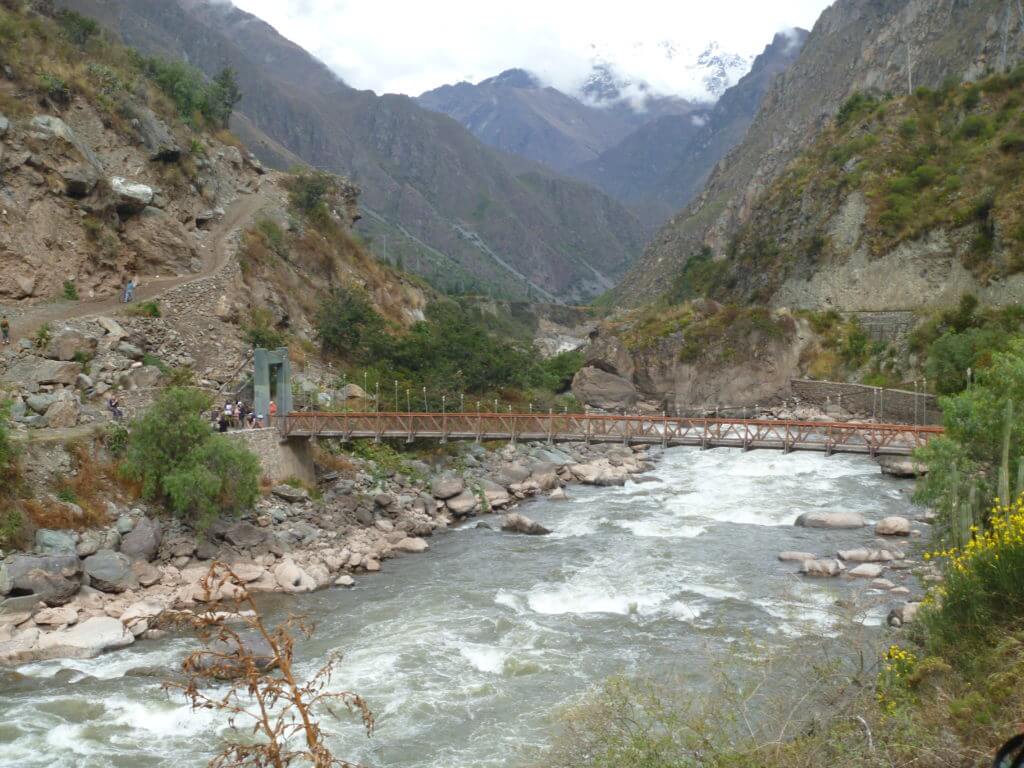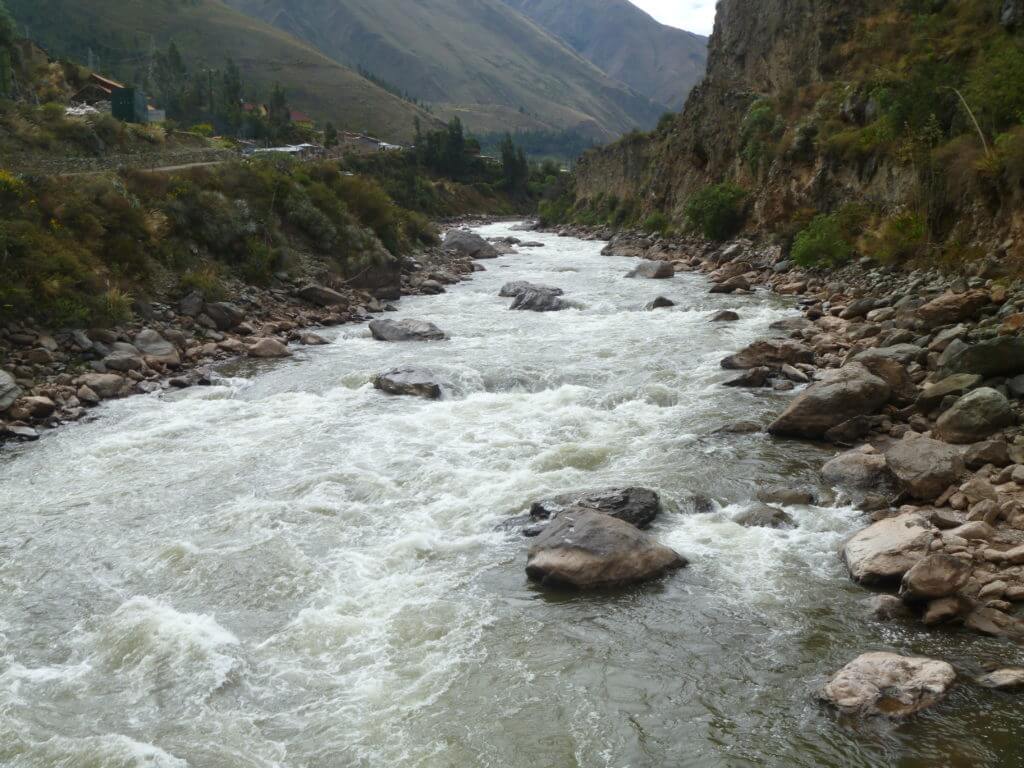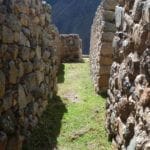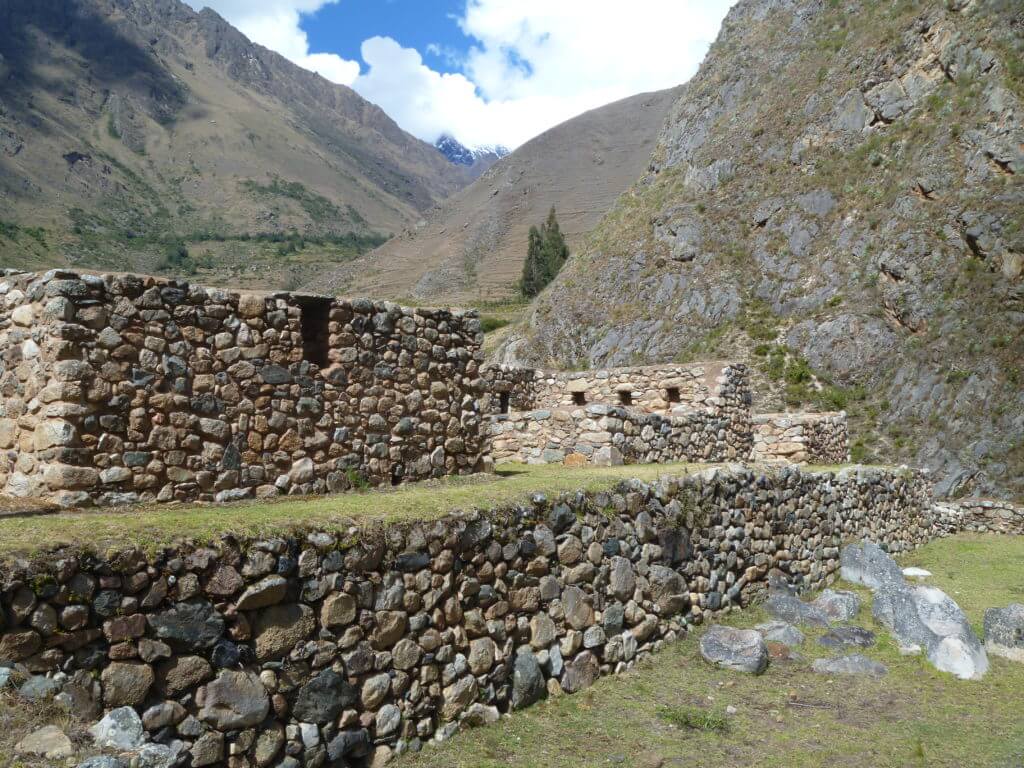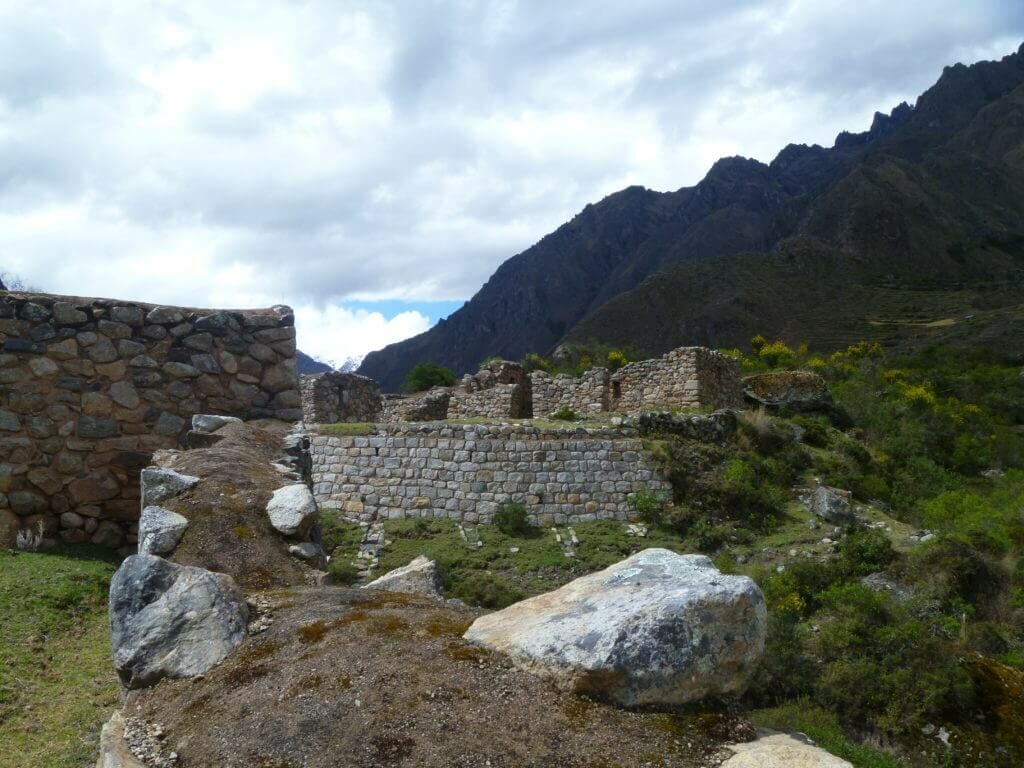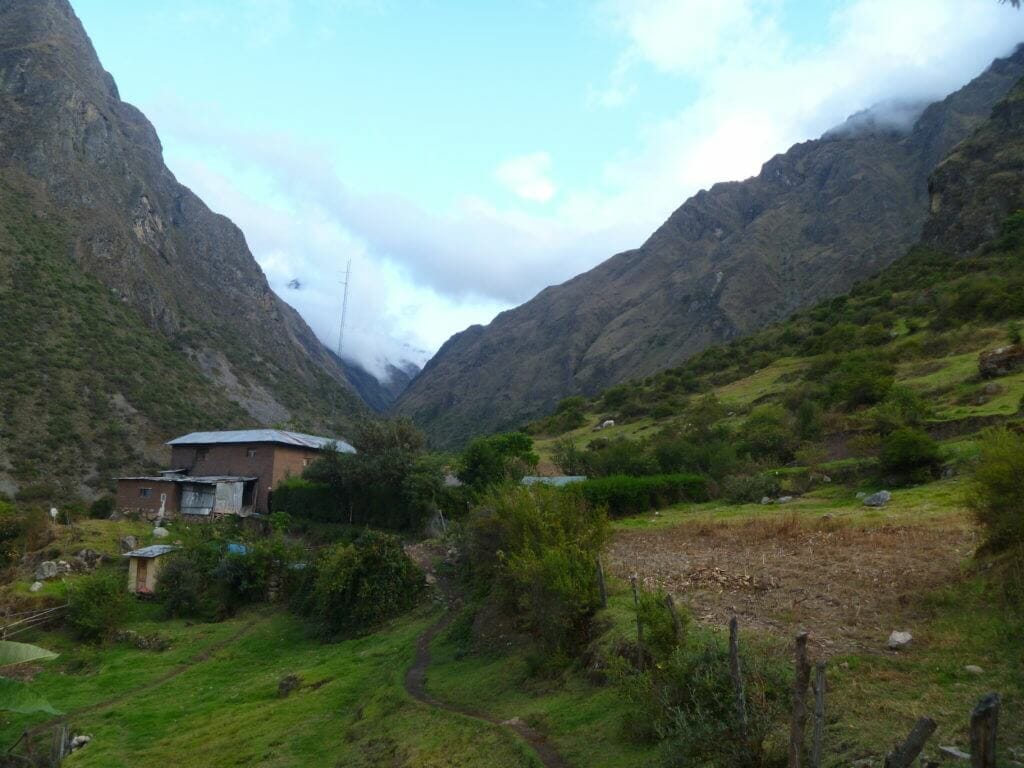Silence shrouded the van in a veil of uncertainty. I had been dreaming of this moment for so long. Well, not the awkward silence we were now sitting through, but the moment in 4 short days when, hopefully, I would be standing at the Sun Gate gazing down on one of this planets ancient masterpieces now dug out of its surrounding jungle tomb. Since first seeing Machu Picchu on the Discovery Channel I had dared to dream that one day I would see it with my own eyes.
“Why on earth would you want to walk to it?”, was the usual response from people that realised what I was talking about although some gave me words of support even though, clearly, they hadn’t the foggiest idea of what I was banging on about. My sister even told me to have a great time in Africa, painfully evident that geography was not really high on her list of priorities at school.
The true answer to the question of why I wanted to torment my body with the physical walk from KM82 up and over Dead Woman’s Pass then endure 3 hours of the “Gringo Killers” before the mad final scramble from camp up to the Sun Gate with one goal in mind (get there before the sun does) with countless others falling over each other, only came to me as I was actually sitting on a ledge on my own contemplating what I had just achieved while watching thousands of tourists scrambling about, breathlessly panting, trying to get the best view of the llamas grazing in the main square or grab a peek of the Temple Of The Sun.
The answer was not only to challenge myself which was the original goal but along the way and after many hours of solitude on the Inca Trail, I realised that the only way to truly experience what Machu Picchu meant to the Inca People was to actually walk it, however small a section, from KM82 to the site and after having some of the breath-taking ruins that pepper the first 3 days pretty much to ourselves the sight of so many people as we made our way down from the Sun Gate to the main site was a little jarring.
Machu Picchu is now very accessible thanks to the daily train service from Cuzco to the tiny one street town of Agua Calientes that sits at the base of the mountain on which it stands straddling the Urubamba River. Buses ferry tourists from the town to the site regularly throughout the day and herein lies the problem if the site is to remain open.
Day visits are now so popular, the shear number of people are threatening the sustainability of the site yet they need visitors to fund the astronomical upkeep of it. It’s a catch 22 situation. I can see that, in the not too distant future, they will start limiting people to the site on a daily basis just like they do for the people now wanting to walk the Inca Trail there. It’s the only real answer they have of sorting out the overcrowding issue while keeping the site open and accessible and bringing in much needed funds but it will mean that in the future you will need to plan your visit there not just turn up on the best day for the weather while you’re in Cuzco.
Back on the bus the shuddering stop and opening doors signalled that we had arrived at our start point. Everyone was silent, contemplative, worried even. Walking the Inca Trail is among the most dreamed of activities on bucket lists the world over as evidenced by our eclectic group mix of English, Irish, Australian, New Zealanders and even a lovely couple from the Cook Islands.
The start point for our little adventure is an unassuming but very crowded hut at the edge of the fast flowing Vilcanota River. Crowds of porters are waiting patiently for their next group of willing hikers to arrive so they can grab our minuscule trekking bags (5kg maximum) from us and make their way to set up camp for the first evening.
Formalities sorted with and the usual group shot below the KM82 Inca Trail Sign sorted and we were off following the river parallel for 5 minutes praying we weren’t going to be crossing the rickety looking bridge up ahead. Turning left it looked as though the rickety river crossing was the first obstacle we would be tackling to get onto the trail proper.
Safely across the surprisingly sturdy bridge and over the fast flowing river we quietly made our way up the trail to join the true Inca Trail after about 30 minutes. The trail weaves it’s way through valleys with towering mountains all around you as you climb to the first campsite, one of many dotted around a village called Wayllabamba.
Camps on the Inca Trail are relatively small and there are many dotted around. The campsite you use will depend on your chosen tour company. Working our way up through the impossibly steep mountains from our start point at 2720m/8923ft to the campsite at 3000m/9842ft the gradient is fairly steep but not too bad. Flying into Cuzco the afternoon before we started was a mistake on my part. If this is to be your first high altitude hike make sure you arrive in Cuzco a good 2 or 3 days before the start of the hike and use that time to explore the city and acclimatise.
Standing in the middle of the trail an hour into our five hour day, heaving like an asthmatic 90 year old smoker, my lungs wanted to break out of my chest and run for the hills. I really should have attempted some kind of training regime but how exactly do you train for high altitude? The answer is you don’t but you do try to get in the best physical shape you can before you arrive. In the years since I have done this trek I have found, for me, that includes teaching myself to swim and rekindling my love of racket sports.
Altitude does not discriminate on age or gender. There is no way to know if you will be affected until you are at altitude and this is a good trek to test out the waters. Starting relatively low with a challenging second day, the pay off with the views and ruins that you can only see by trekking are more than worth it. If you have asthma don’t let that deter you from trying. In all the high altitude treks I have done the people that are affected the most have been smokers.
On the trail, bent over double and gasping for air I knew that I should have done a fair few more laps in the pool and a good many more hours on a court chasing a ball but I knew that this was more altitude related than physical at the moment. I should have given myself a better chance to acclimatise. I should have known when, on the first night in the hotel in Cuzco, I found myself panting heavily after running down three flights of stairs from the room to the scales trying to get my kit under the dreaded 5kg limit. Running back up the first flight, walking up the second and crawling up the third into my room I needed a lie down for 5 minutes to recover before doing it all again five more times.
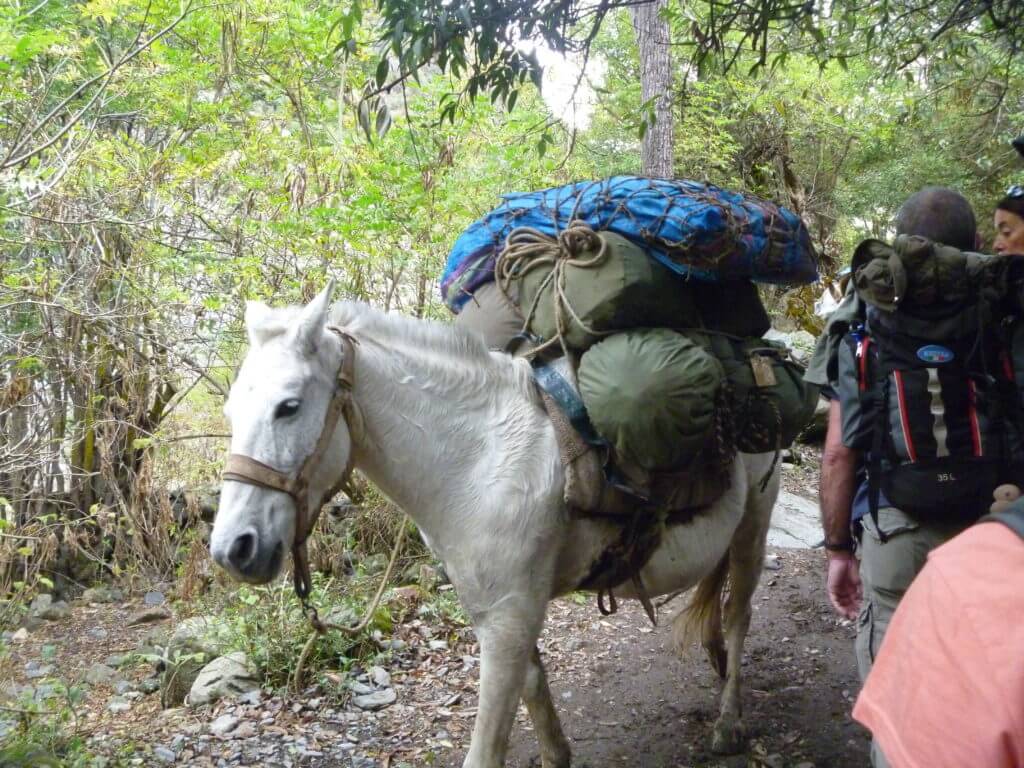
You will find the trail on the first day to be a little hectic. Keep a look out for oncoming donkeys.
All along the crowded lower trail, the ruins of small buildings dotted the landscape along with small settlements along the many streams that criss-cross the mountains. You will have plenty of opportunities to dodge many donkeys used to transport goods (and hikers that find the altitude too much) down the trail, or to buy small souvenirs and nibbles from one of many makeshift stalls set up on the trail but they won’t be as cheap as elsewhere.
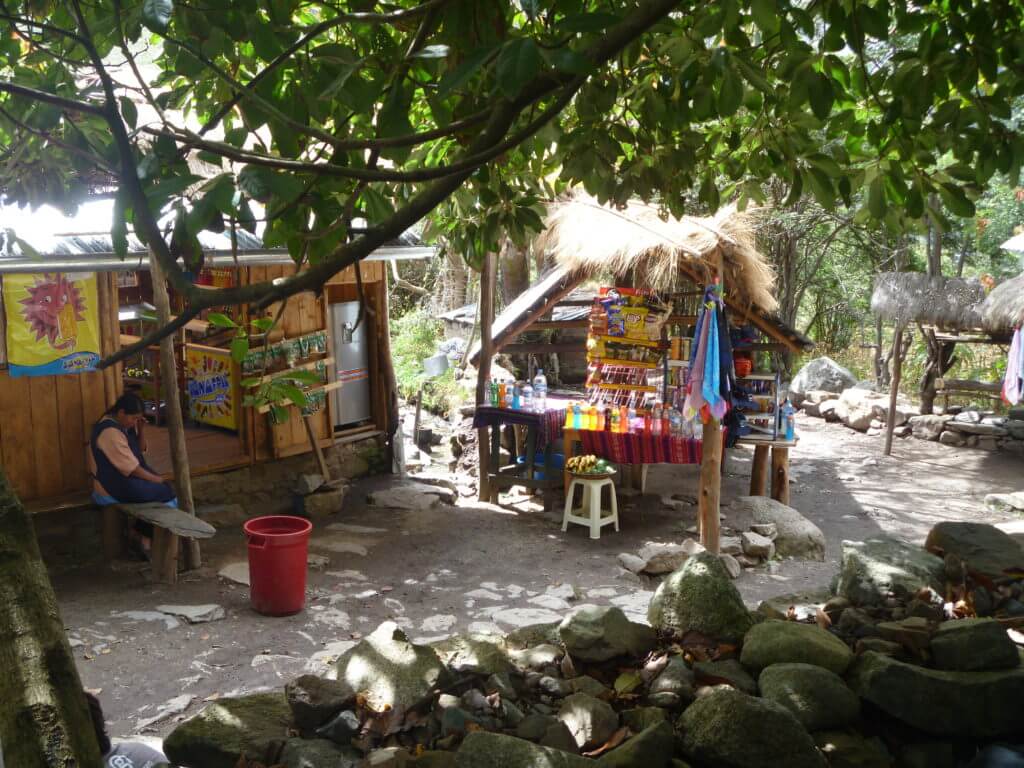
Dotted all along the trail on the first day, enterprising locals set up stalls to sell hikers trinkets, water, sweets and snacks.
The first main archaeological site you will encounter 6km along the trail, after lunch, is Patallacta (which, according to Wikipedia, means ‘settlement on a platform’) although a lot of sites depict this as Llactapata which is a smaller site higher up the mountain but linked to Patallacta by the trail. Looking down on this impressive agricultural complex from the Llactapata above there are ruins of roughly 100 buildings looking out over some terraces used to grow crops which follow the natural curve of the river. The site was discovered by Hiram Bingam in 1912 just after he had discovered Machu Picchu but the valley was densely overgrown and soon after it’s discovery it was covered in vegetation again waiting to be discovered a final time.

Patallacta viewed from Llactapata. The train to and from Cuzco follows the river course just the other side of the ruins.
The railway line back to Cuzco runs just the other side of the ruins but, because of the height of the retaining walls, it is not visible on your return. While we do not visit the ruins themselves they are a tantalising glimpse of the simply spectacular sites that await in the coming days.
Llactapata is a quaint, small by the standards of some sites we were yet to visit, collection of remarkably well preserved buildings. Walking in and around small houses and open courtyards you could imagine people living here as they did in the time of the Incan Empire some 500 years ago.
Admiring the views as we gradually climbed higher and higher a small cluster of what looked like farms came into view spreading out. Getting closer we could make out some brightly coloured tents. We had arrived at our stop for the evening. Perched on one of the higher camps in the village we had stunning views of the valley below and a glimpse of tomorrow with the mountains towering far above us. Our site even had it’s own mini ruins for us to explore after we had been introduced to everyone in our support team.
Sitting in the valley we were sheltered from the wind but as the sun set the temperature dropped dramatically. I was thankful I had managed to pack a couple of warm layers in my bag. Dinner was nearly ready but as I pulled my fleece over my head I thought I saw a vision. A vision of beer heading my way. Blinking my eyes it wasn’t a vision. It was real. An enterprising young lad no more than 14 or 15 had loaded himself up in the shops on cans of the local lager and trekked them all the way to us in camp. I am all for supporting local enterprise and along with a couple from Ireland and another from Australia we bought his entire supply. This was going to be a fantastic evening.
20 minutes and a few cans of lager later it was time to retire for dinner. We had survived our first day but tomorrow we had to tackle the hardest and probably most talked about section of the route because of it’s altitude. Tomorrow we would have to crest Dead Woman’s Pass. We should probably get an early night but, cracking open one last can each, we were determined to make the most of our time here.
 Copyright secured by Digiprove © 2016
Copyright secured by Digiprove © 2016

